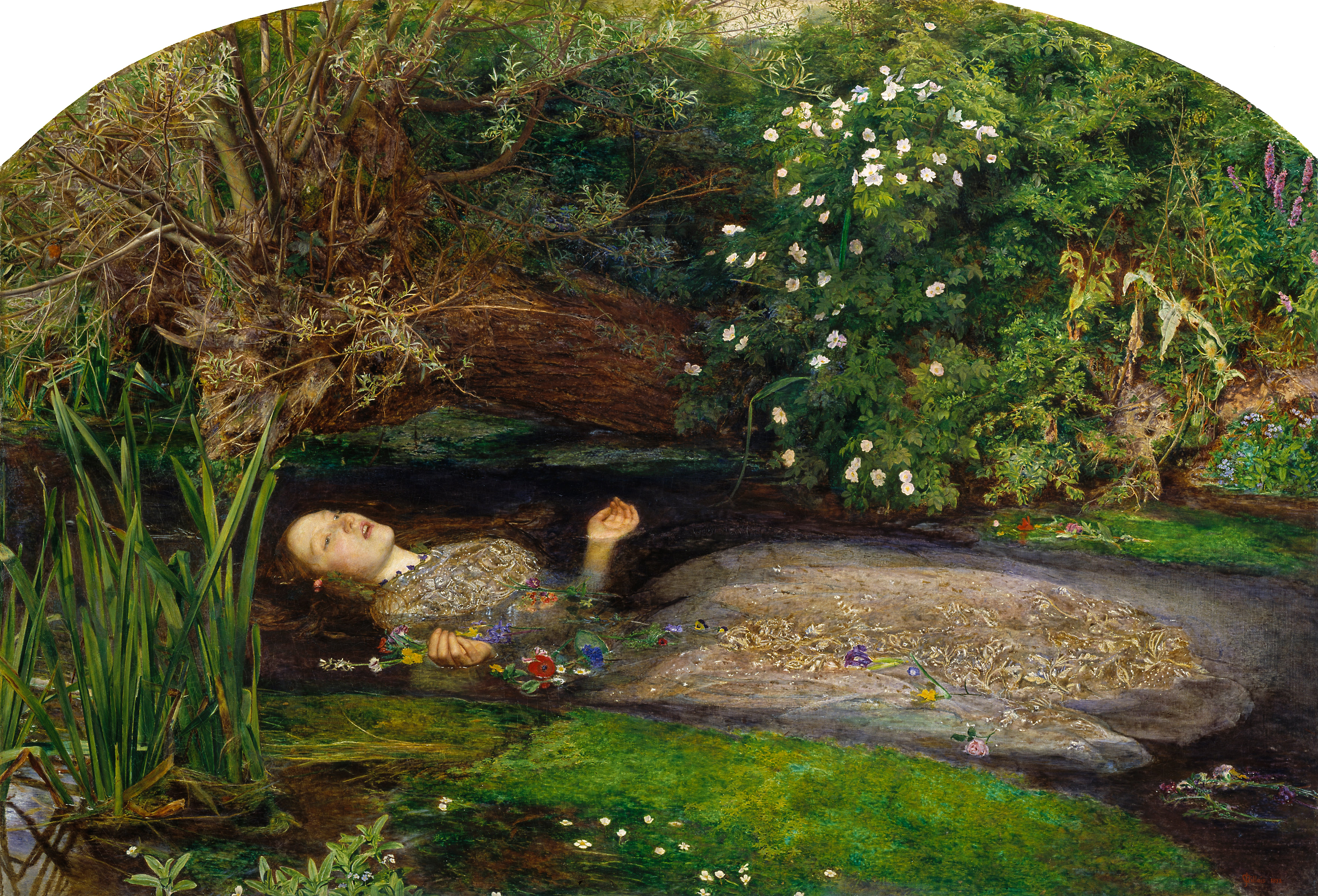
Poor Ophelia, her love for the Danish prince Hamlet is not returned; “Get thee to a nunnery. Why wouldst thou be a breeder of sinners? I am myself indifferent honest, but yet I could accuse me of such things that it were better my mother had not borne me.” (Hamlet has some severe mother issues).
This breaks her heart and things get worse; when Hamlet kills her father, she turns mad and drowns singing after she falls in a brook. Hamlets mother Gertrude describes to Ophelia’s brother Laether what happened to her:
“There’s a willow that leans over the brook, dangling its white leaves over the glassy water. Ophelia made wild wreaths out of those leaves, braiding in crowflowers, thistles, daisies, and the orchises that vulgar shepherds have an obscene name for, but which pure-minded girls call “dead men’s fingers.” Climbing into the tree to hang the wreath of weeds on the hanging branches, she and her flowers fell into the gurgling brook. Her clothes spread out wide in the water, and buoyed her up for a while as she sang bits of old hymns, acting like someone who doesn’t realize the danger she’s in, or like someone completely accustomed to danger. But it was only a matter of time before her clothes, heavy with the water they absorbed, pulled the poor thing out of her song, down into the mud at the bottom of the brook.”
This is the scene painted by John Everett Millais. Critical reception was mixed when it was first displayed. A critic in The Times wrote that “there must be something strangely perverse in an imagination which souses Ophelia in a weedy ditch, and robs the drowning struggle of that lovelorn maiden of all pathos and beauty”. But it is now considered as one of the great British paintings.